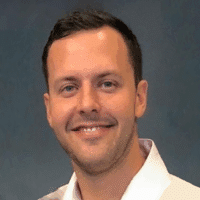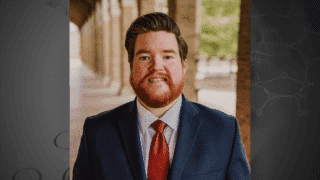 The PCC was pleased to continue our partnership with the American Physiological Society (APS) to recognize and support early-career researchers through the PCC-sponsored Anti-doping Predoctoral and Postdoctoral Awards! The awards are presented to one or more predoctoral graduate students or postdoctoral fellows for their exceptional research in environmental, exercise, thermal, or applied physiology. To be considered for an award, students must be conducting research relevant to ergogenics, the detection of performance-enhancing drugs and procedures, and/or the impact of training and environmental stresses on hematological profiles. Kevin Murray, PhD, is a Postdoctoral Associate in the Integrative Physiology of Aging Laboratory at the University of Colorado Boulder. His research over the years has examined the effects of aging and exercise on vasculature, and most recently, the role extracellular vesicles may play in modulating arterial function. You can learn more about Kevin and his research in this interview, and also check out his recent episode of The Anti-Doping Podcast.
The PCC was pleased to continue our partnership with the American Physiological Society (APS) to recognize and support early-career researchers through the PCC-sponsored Anti-doping Predoctoral and Postdoctoral Awards! The awards are presented to one or more predoctoral graduate students or postdoctoral fellows for their exceptional research in environmental, exercise, thermal, or applied physiology. To be considered for an award, students must be conducting research relevant to ergogenics, the detection of performance-enhancing drugs and procedures, and/or the impact of training and environmental stresses on hematological profiles. Kevin Murray, PhD, is a Postdoctoral Associate in the Integrative Physiology of Aging Laboratory at the University of Colorado Boulder. His research over the years has examined the effects of aging and exercise on vasculature, and most recently, the role extracellular vesicles may play in modulating arterial function. You can learn more about Kevin and his research in this interview, and also check out his recent episode of The Anti-Doping Podcast.
Background
Tell us about your educational background.
I am finishing my postdoctoral training in Dr. Douglas Seals’ Integrative Physiology of Aging laboratory at the University of Colorado in Boulder. Currently, I am conducting a Phase II clinical study assessing the efficacy of reducing mitochondrial oxidative stress for improving vascular function in older adults. This trial will wrap up in the next few months. Prior to this, I completed my PhD with Dr. Thomas Clanton at the University of Florida. There I studied the underlying mechanisms – such as DNA methylation and epigenetics – for increased chronic disease risk in individuals who survive exposure to exertional heat stroke. I also completed a master’s degree at Indiana University with Dr. Tim Mickleborough where I assessed the possible reasons for why a carbohydrate mouth rinse improves performance in elite cyclists. Overall, I’ve had a lot of very different research experiences which I consider crucial for developing myself into a well-rounded translational scientist.
What educational/professional opportunities helped you reach this point in your career?
I think it is important to highlight my mentors and the doors they opened, the opportunities they provided me with, and the trust they gave me in allowing me to pursue interesting questions to feed my creative (yet logical) impulses. I remember first starting out as a master’s student looking for an opportunity to try out research. Dr. Loren Bertocci at Marian University in Indianapolis gave me that initial experience. We had met at a weightlifting gym in downtown Indianapolis, and after my incessant talk of science, he offered me a volunteer position over the summer working on a project to determine the role of oxidative stress in driving mitochondrial biogenesis. I loved it and have never looked back since. I am grateful for that opportunity to this day.
Why did you choose to go into your field of research?
I took a class during my master’s called biochemistry of exercise physiology with Dr. Mickleborough. I am an former college basketball athlete, and I always read about how to prepare myself for my upcoming seasons, including articles on nutrition and training regimens for strength, endurance, etc. The first week of this class was a coming to moment. I realized this is what I had been searching for all along and what I was passionate about. After that first week, I asked him what it would take to get into research and be competitive for a PhD position in the coming years. The revelation was that instant.
Research
What do you find most interesting or exciting about your research area?
Currently, related to vascular biology in aging, I think it is remarkable that if we can improve vascular function or prevent vascular dysfunction with aging, whatever the intervention may be, that we are theoretically improving the health of every organ in the body and subsequently reducing the risk of dysfunction in that organ in the future. I wanted to be at the point of intervention where I could do the most good, and I felt the vasculature was that place.
You recently presented a poster at the 2025 American Physiology Summit. Can you describe the findings of your work so far?
An additional project I have been working on examines the mechanisms by which exercise can reduce aortic stiffness with aging and/or mitigate age-related aortic stiffening. One potential mechanism we have been exploring is exercise, which may favorably modulate the factors in circulation, or the circulating milieu. For that work, I presented my results that exercise may alter the circulating milieu to reduce aortic stiffness in older adults. We measured the intrinsic stiffness of aortic rings collected from young mice after exposure to serum collected from young sedentary adults and midlife/older sedentary and habitually active adults. Once we established a phenotype of the blood, it was important to then determine what in the circulating blood is changing to impart this effect. We focused on extracellular vesicles, which are small particles released from cells around the body to communicate and drive cellular and physiological change. We found that the same whole serum phenotype (increased aortic stiffness with aging; mitigated with aerobic exercise) remained when we exposed those aortic rings to isolated extracellular vesicles from the same three groups.
What are the impacts or potential impacts of your research?
Essentially, we are hoping to derive new targets and approaches for potential exercise-inspired strategies to improve vascular function in aging. Although exercise has been shown to have robust positive and systemic effects on physiology with aging, not everyone can take part in exercise due to various factors, such as time constraints, resources, disabilities, etc. So, developing these types of alternative approaches to overcome these barriers is crucial.
Goals and PCC Benefits
How did you learn about the American Physiological Society?
The departments I have been a part of through my research training journey were always affiliated with the APS. So, almost 10 years ago now, I became aware of the APS and the type of work they support and publish, and I have been submitting abstracts to their supported conferences and manuscripts to their family of journals..
How did you learn about the Environmental & Exercise Physiology (EEP) Section Partnership for Clean Competition Anti-Doping Research Award?
When submitting your abstract to these conferences, you learn which awards you can be competitive for by reading their descriptions. So, I was excited when I saw the PCC Anti-Doping Research Award since it fit my work so well. Also, I have always been aware of the PCC as a result of my interests in sports and my awareness of track and field, weightlifting, and swimming. The PCC plays an important role in keeping those sports, and others, clean and on a level playing field.
How will the Environmental & Exercise Physiology Section Partnership for Clean Competition Anti-Doping Research Award contribute to your success?
The recognition from receiving the award is great for developing your own ‘brand’ as a researcher, and it emphasizes that other organizations and researchers think your research is of high interest and importance. It also provided me the opportunity to give a talk at the recent APS Summit in Baltimore, which in addition to being recognized with the award, was exciting because I was able to share my work with an audience of great scientists.
What parallels do you see between Exercise Physiology and the work being done in the Anti-Doping field?
I think where the field of exercise physiology is now, compared with 15 years ago, is very cellular and molecular. We can almost call ourselves molecular physiologists at this point. So, we can contribute to the understanding of how exercise or training improves physiology and performance at the molecular level in hopes of determining what future therapies could be developed or staying ahead of possible doping strategies that may be developed in the years to come.
What have you gained from your research experience?
From this research experience, I have developed a better understanding as to how exercise can modulate vascular function to improve overall physiological health and fitness. The next steps are to figure out where the extracellular vesicles are coming from and what is inside of them that may be leading to these exciting results.
What are your long-term research or career goals?
My long-term research goals are to run my own laboratory as an academic faculty member to answer my own questions and contribute to the fields of health, aging, and disease. I have a lot of unique experiences to draw from, so I am excited to see what the future holds for me.



